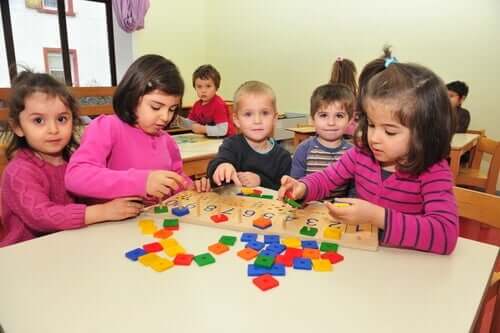The Role of Systematization in Pedagogy


Written and verified by the pedagogue and trainer María Matilde
Pedagogy is fed by other sciences such as psychology or philosophy, as well as by certain tools and procedures. In this case, we’re going to analyze the role of systematization in pedagogy.
Pedagogy as a discipline
Pedagogy is the discipline that aims to organize education in general, and teaching in particular. It does so to achieve certain goals. These ends are in accordance with the criteria that a society establishes on the normal social behavior of the individuals who make up that society.
Pedagogy studies education as quite a complex phenomenon. It uses methodologies and techniques to facilitate the teaching-learning process through its planning, execution, and evaluation. In other words, we could say that pedagogy is the science that deals with a person’s education and training.
Through its teaching processes, it seeks to give people the knowledge they need in order to develop their personality. In addition to this, it aims to equip them to be able to live together in society.

Systematization as a research technique
Every discipline requires a continual process of research. It needs to continue establishing its theoretical and conceptual bases.
To do so, it uses different research strategies that allow it to obtain information. This information can then be used to reflect on and create new knowledge.
Systematization refers to the study of how subjects act in an educational setting, in order to convert these “actors” into knowledge-producing subjects. Its objective is to understand what meanings people ascribe to their studies, to reflect upon them, and to produce new knowledge that transforms and improves them.
In simpler words, systematization is a description, or reconstruction, of a specific reality that’s as objective as possible. It’s about studying realities without any hypotheses or preconceived ideas. It simply collects, as faithfully as possible, the ideas of the subjects in their own words.
Systematization in pedagogy
Now that we’ve defined what systematization is as a research technique, we’d like to highlight the role that systematization plays in pedagogy. The purpose of systematizing educational and school experiences is to contribute to the transformation and improvement of the educational institution.
What systematization allows in the educational field is to provide key information and to understand the processes and actions of educational subjects, as they experience and describe them.
This information may be related to many different fields, levels, situations, elements, variables, opinions, achievements, and innovations, etc.
In turn, this information, together with the consideration of a particular institutional context, should be studied and analyzed in order to improve the way the institution works.

Steps and elements necessary for systematization in pedagogy
Since this is a detailed and comprehensive process, a number of steps are required to carry out systematization in pedagogy. They are:
Recording the experiences
Information is the key, and it must be clear, accurate and comprehensive. You should use all types of field notes and journals, including other types of information media, such as recordings, films, photographs, etc.
Designing an instrument to be able to organize the information collected
Depending on the pre-established objectives or the purpose of the systematization, the data must be ordered, classified and coded, in order to be able to interpret it later.
Analysis and interpretation of the information
This step involves analyzing practices based on the information obtained, identifying both positive points and strengths, as well as other aspects that may be influencing school life in a negative way.
In conclusion, and with respect to this last step, it’s important to be able to make a critical interpretation of the experience of the whole process. You should do this by always considering the perspective, opinion, and meaning that each individual gives to his or her own studies.
All cited sources were thoroughly reviewed by our team to ensure their quality, reliability, currency, and validity. The bibliography of this article was considered reliable and of academic or scientific accuracy.
- Arrieta Pérez, Luz María, Callejas González, Lilly Elena, Agudelo Guzmán, Ana Eugenia, Tamayo Flórez, Edwin Antonio. (2014). Sistematización en educación y pedagogía. Universidad de Antioquía. http://ayura.udea.edu.co:8080/jspui/bitstream/123456789/2291/1/sistematizacionedped.pdf
- Raimondi, G. M. (2004). La sistematización educativa: acerca de su especificidad. Revista Enfoques Educacionales 6 (1): 19 – 28, 2004. http://www.facso.uchile.cl/publicaciones/enfoques/08/Messina_Raimondi.pdf
This text is provided for informational purposes only and does not replace consultation with a professional. If in doubt, consult your specialist.








